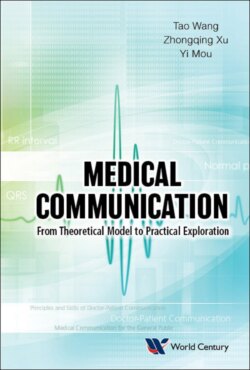Читать книгу Medical Communication: From Theoretical Model To Practical Exploration - Tao Wang - Страница 16
На сайте Литреса книга снята с продажи.
1.1.Types of scientific communication activities
ОглавлениеIn October 1999, the British Science Charity Foundation (Wellcome Trust) commissioned a market research company (Research International) to conduct a comprehensive survey of the current status of science communication activities in Britain. The survey analyzed the objectives, audiences, topics, locations, and efficiency of various science communication activities. Based on this analysis, they explored whether these activities needed to be changed, how the public participated in the discussion of science topics and how the communication strategies could be established. This survey had been done through a combination of literature research, quantitative, and qualitative investigation. Qualitative surveys (face-to-face interviews and telephone interviews) and quantitative surveys (telephone interviews and online surveys) are mainly concerned with the themes, objectives, role of organizers, efficiency, evaluation criteria and funding sources of past scientific communication activities, strategies for future scientific communication activities, experiences of other scientific communication activities, and views on science communication activities. After the investigation, various types of scientific communication activities were summarized in the report “Science and the Public: Atlas of Scientific Communication Activities”. Of the survey, the target audience including the general public and policy makers, the communication objectives including promoting public interest, deepening scientific understanding and influencing scientific policy, and the types of scientific communication activities all showed their diversity and complexity (Figure 2.1).
At the same time, the use of media is also rich and diverse in different scientific fields. There are traces of scientific communication in the domains of mass media (such as television, magazines), new media (network, mobile media), scientific competitions, and public lectures. Finally, the report argues that hands-on and interactive approaches are efficient for science communication. Interactive science communication activities can break the barriers between the public and the scientific community and establish their dialogue mechanism. However, this interaction should be tailored to local conditions at the right times. The scientific community should and has begun to understand the public, rather than just asking the public to “work harder” alone. Some of the public has not been covered, so more efforts are needed in this regard. Media using has both opportunities and challenges in science communication, so improving the relationship between scientific community and media is conducive to the development of science communication (Figure 2.2).3
Figure 2.1 Atlas of types of scientific communication activities.
Source of data: Science and the Public: Mapping Science Communication Activities. Prepared by Research International.2
Figure 2.2 Discipline and media use in science communication activities.
Source of data: Science and the public: Mapping science communication activities. Prepared by Research International.3
The complexity and diversity of science communication activities also exist in the practice of science communication in China. The results of the Chinese Citizens’ Scientific Literacy Survey conducted by the Chinese Association of Science and Technology over the years showed that the public’s access to scientific information is diversified, and the levels of the infrastructure and the science activities of science popularization were also improving steadily. From March to August in 2015, the Chinese Association of Science and Technology launched the ninth sampling survey on the scientific literacy of Chinese citizens, covering 31 provinces, autonomous regions and municipalities directly under the Central Government in the mainland of China. According to the survey published in September 2015 (Table 2.1), the proportion of citizens using the Internet and mobile Internet to obtain scientific and technological information reached 53.4%, which ranked more than twice of 26.6% in 2010, surpassing newspapers (38.5%) and second only to televisions (93.4%). Internet and mobile internet had become the first channel for citizens with scientific quality to obtain scientific and technological information, through which up to 91.2% of them obtained the information. As a traditional mass media, television is still the main channel for citizens to obtain scientific and technological information. The percentage of citizens using TV to obtain scientific and technological information was 93.4%, which was slightly higher than that in 2010 (87.5%), far less than the growth rate of the proportion of citizens accessing the information through the Internet. In terms of popular science facilities, the opportunities had increased in access to scientific knowledge and scientific and technological information through popular science facilities for citizens; also, the utilization rate of popular science facilities had been improved. In the past year, the proportions of citizens visiting all kinds of popular science venues are: science and technology museums (22.7%) and nature museums (22.1%). The proportions of visiting popular science places nearby are: book reading room (34.3%), popular science gallery, or propaganda board (20.7%). Comparing with the data of visiting rate of non-formal science education places in American Science and Engineering Index (2014), the utilization of popular science facilities in China is similar to that in the United States (25% of American citizens visited science and technology museums and other science and technology venues, 28% of them visited nature museums in 2012).
However, it was not clear whether the effectiveness of these scientific communication practices could be regarded as “success”. One of the important reasons was that there was no consensus on the goal of science communication. Therefore, Bruce Lewenstein, Professor of Science Communication at Cornell University, wrote the four common models of scientific communication.4
Table 2.1 The use of public science popularization channels in China in 2005, 2010, and 2015.
